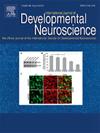Whole Brain Spectral Power Differences During Infancy Following Antenatal SARS-CoV-2 and Zika Virus Exposure: Findings From Cohorts in Boston, Massachusetts and San Juan, Puerto Rico
Abstract
Background
Viral exposure during pregnancy is associated with adverse outcomes in offspring. Given the increasing frequency of viral outbreaks both locally and globally, the current study sought to examine the impact of antenatal exposure to Zika virus (ZIKV) and SARS-CoV-2 on infant neurophysiological development during the first year of life.
Methods
Families were recruited from two cohorts, one in San Juan, Puerto Rico (ZIKV) and one in Boston, Massachusetts (SARS-CoV-2). For the ZIKV cohort, infants were assessed cross-sectionally between 3 to 12 months of age. For SARS-CoV-2, infants were assessed longitudinally at 3, 6, 9 and 12 months. Electroencephalography (EEG) was used to compare absolute power during a resting state task across the whole brain (by spectral band) between infants with antenatal viral exposure and nonexposed infants. Data were analysed using generalized linear models (GLMs) and multilevel mixed effects models.
Results
In the ZIKV cohort, age-by-exposure interactions were observed for delta (p = 0.027) and theta power (p = 0.009), where exposed infants demonstrated decreasing power with age, while nonexposed infants demonstrated increasing power with age from 3 to 12 months. In the SARS-CoV-2 cohort, antenatally exposed children had lower levels of beta (p = 0.022) and gamma power (p = 0.044) overall from 3 to 12 months. Significant recovery was observed in trajectories for beta power by 12 months.
Conclusion
ZIKV exposure during pregnancy was associated with reductions in low-frequency EEG power, which may be indicative of disruptions in early brain maturation. SARS-CoV-2 exposure was associated with reductions in higher-frequency power, suggesting potential impairments on sensorimotor and cognitive integration. Increases in beta power by 12 months in the SARS-CoV-2 cohort indicate some recovery, although potential compounding and sleeper effects from early disruptions are possible.


 求助内容:
求助内容: 应助结果提醒方式:
应助结果提醒方式:


